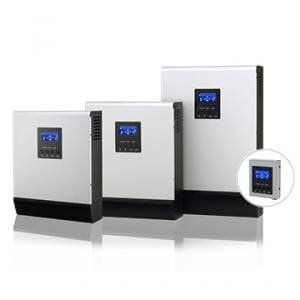The main function of the photovoltaic inverter is to convert the direct current generated by the solar panel into the alternating current used by the home appliances. The purpose of the inverter can be divided into: grid-connected inverter and off-grid inverter, so what is the difference between these two inverters?

Grid-connected inverters are generally divided into photovoltaic power generation grid-connected inverters, wind power generation grid-connected inverters, power equipment power generation grid-connected inverters and other power generation equipment power generation grid-connected inverters. The characteristic is that the power of the system is high and the cost is low.
Grid-connected inverters are generally used in large-scale photovoltaic power station systems. Many parallel photovoltaic strings are connected to the DC input end of the same centralized inverter. Generally, three-phase IGBT power modules with high power are used. Small uses field effect transistors, while using a DSP conversion controller to improve the quality of the power produced, making it very close to a sine wave current.
The biggest difference between grid-connected inverters is that they do not store any batteries. The DC power generated from the solar panels is directly converted into AC power through inverters and directly connected to the public power grid. However, there are certain thresholds, which are to comply with the relevant local power grid. regulations and policies, otherwise the grid connection cannot be provided

Off-grid inverters typically employ complete system solutions of modular components, consisting of a number of manageable building blocks: an inverter, a solar charge controller, an automatic generator starter module, and a system control board.
The off-grid inverter, as its name implies, is a system that is disconnected from the public power grid. The direct current generated by the solar panel is first stored in the battery, and then the battery is transported to the off-grid inverter for inversion. The load can also be returned to the battery for storage. It is more suitable for those remote areas without power network coverage, such as deserts, plateaus, and deep forest areas, which can provide power demand anytime, anywhere.


